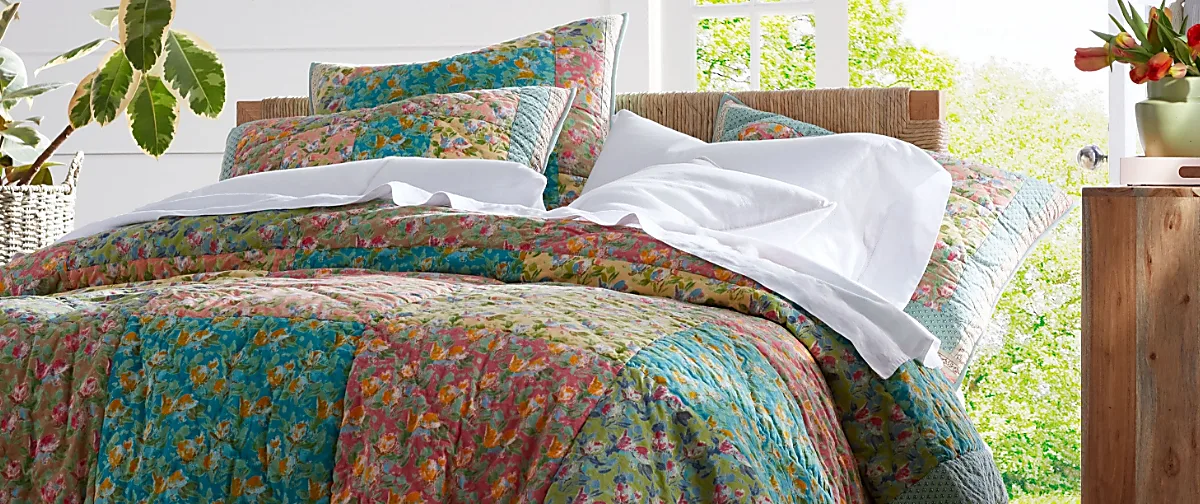Quilt Blanket Care: Tips for Cleaning and Maintenance
Quilts are cherished items that provide comfort and hold sentimental value. Caring for and maintaining them properly is essential to ensure their longevity. This article offers valuable tips for cleaning and preserving quilt blankets, ensuring they remain in excellent condition for years.
Understanding the Composition
Before cleaning your quilt blanket, it is essential to understand its composition. Quilts can be made from cotton, wool, silk, or synthetic fibers. Each material requires different care techniques to prevent damage. Consult the label or seek advice from a quilt expert to determine the best cleaning methods for your specific quilt blanket.
Detecting and Addressing Issues Early
Regularly inspecting your quilt blanket helps identify any issues or damage requiring immediate attention. Look for loose threads, worn areas, stains, or signs of pests. Detecting these issues early is crucial in preventing further damage or deterioration. It allows you to take the necessary steps to address and resolve the problem before it escalates. Being proactive in identifying these issues can save you time and money in the long run.
Preserving the Integrity
For delicate quilt blankets, handwashing is often the preferred method. Fill a bathtub or large basin with lukewarm water and a gentle detergent suitable for the quilt’s fabric. Gently agitate the quilt in the water, focusing on stained or soiled areas. Avoid scrubbing or wringing the quilt to prevent damage. After rinsing, make sure to squeeze out any excess water using a clean towel gently. Allow the quilt to air dry on a flat surface, away from direct sunlight.
Exercising Caution
While handwashing is recommended for most quilts, machine washing may suit quilts made from sturdier materials. Use a front-loading washing machine on a delicate or gentle cycle with a mild detergent. Place the quilt in a mesh laundry bag or pillowcase to protect it during the wash. Avoid overloading the machine and use cold water to minimise color bleeding. After washing, air dries the quilt or use a low-heat setting in the dryer if allowed by the care instructions.
Treating Spots and Discoloration
If your quilt blanket has stains or discoloration, approach stain removal with caution. Test any cleaning solution or product on a small, inconspicuous area of the quilt first to ensure it does not cause further damage or color fading. Treat stains gently using mild detergent, vinegar, or specialized stain removers. Blot the stain rather than rubbing it to prevent pushing the stain deeper into the fabric.
Protecting The Blankets When Not in Use
Proper storage is crucial to prevent damage to these blankets when they are not in use. Before storing the quilt, make sure it is clean and completely dry to prevent the growth of mold or mildew. It is best to avoid using plastic bags as they can trap moisture. Instead, opt for a cotton or muslin bag that allows the quilt to breathe. Store the quilt in a cool, dry, and dark place, away from direct sunlight, excessive heat, or humidity.
Professional Cleaning:
If you are still determining the best cleaning method for your quilt blanket or if it has significant stains or damage, it is advisable to consult a professional quilt cleaner. These experts have the knowledge and experience to safely clean and restore your quilt, using specialised techniques and products that ensure its preservation.
Conclusion:
Caring for these blankets is essential to preserve their beauty and longevity. By understanding the composition of the quilt, regularly inspecting for issues, using gentle handwashing or machine washing methods, treating stains carefully, and storing them correctly, you can maintain the quality and sentimental value of your quilts. When in doubt, seek professional assistance to ensure the best care for your cherished quilts. With proper care and maintenance, these timeless pieces will continue providing warmth and comfort for generations.

Shahid Maqsood, an MBA and Master in Mass Communications, is a seasoned writer with over a decade of experience. Specializing in news and celebrity coverage, he brings a unique perspective from his love for hunting and camping. His work spans multiple platforms like dosttrusty.com and newsbreak.com,Quellpress.com , airriflehunting, and bruitly.com showcasing his versatility and depth. Shahid’s insightful articles reflect his expertise, authoritativeness, and trustworthiness, making him a respected and reliable voice in digital content creation. His contributions engage and inform readers, embodying professionalism and passion in every piece.







![5 Letter Words With Ruel: A Guide for Solving Wordle 243 with Ease – [Jan 2023]!](https://trueqube.com/wp-content/uploads/2023/02/5-Letter-Words-With-Ruel-768x461.webp)